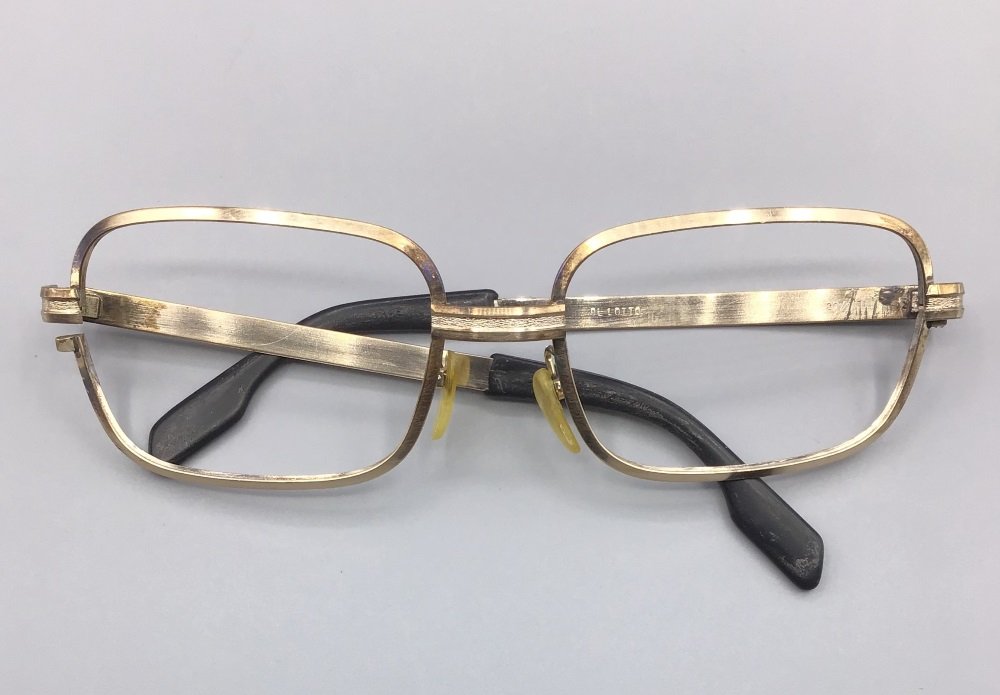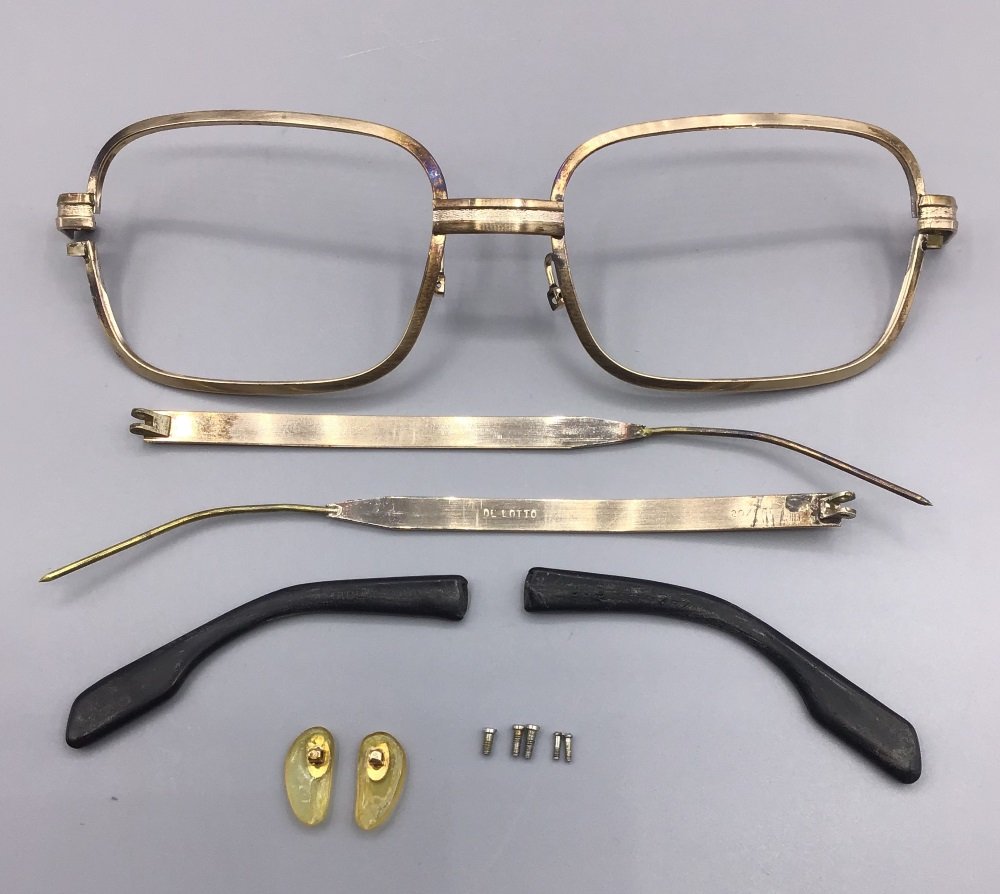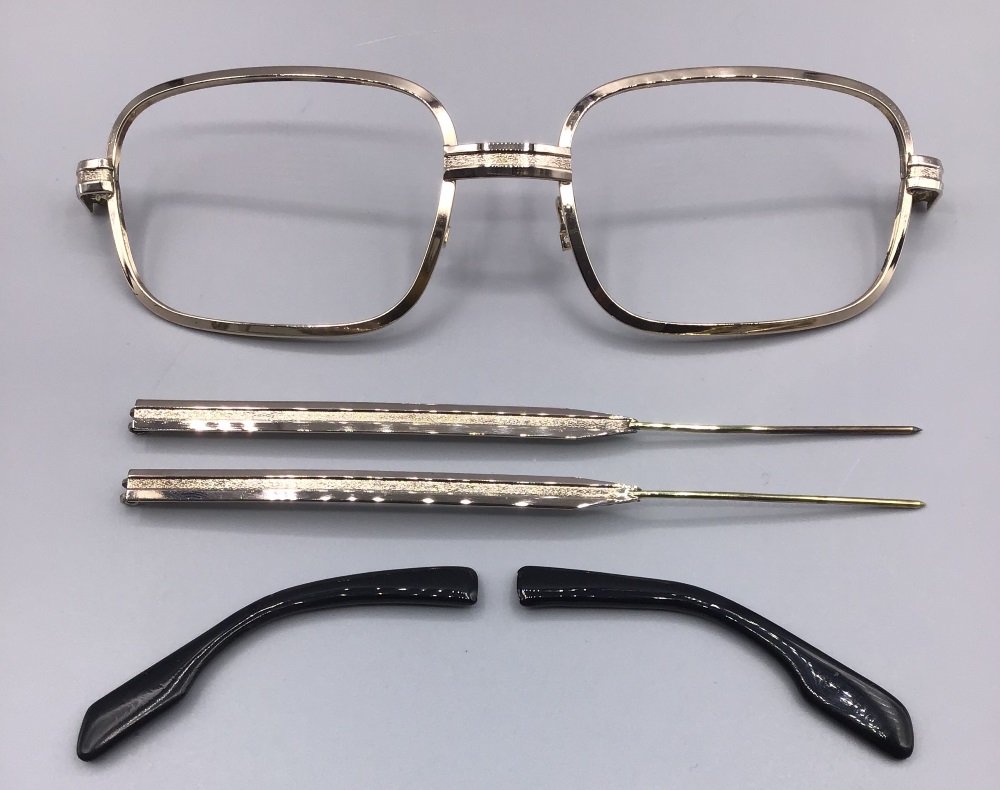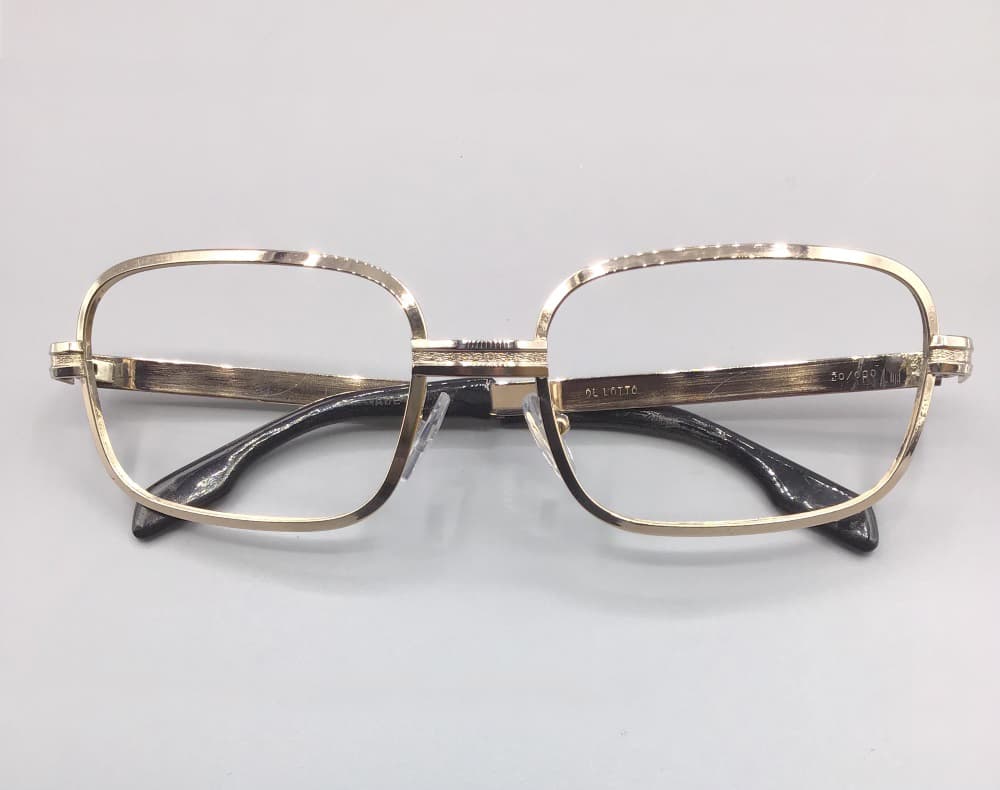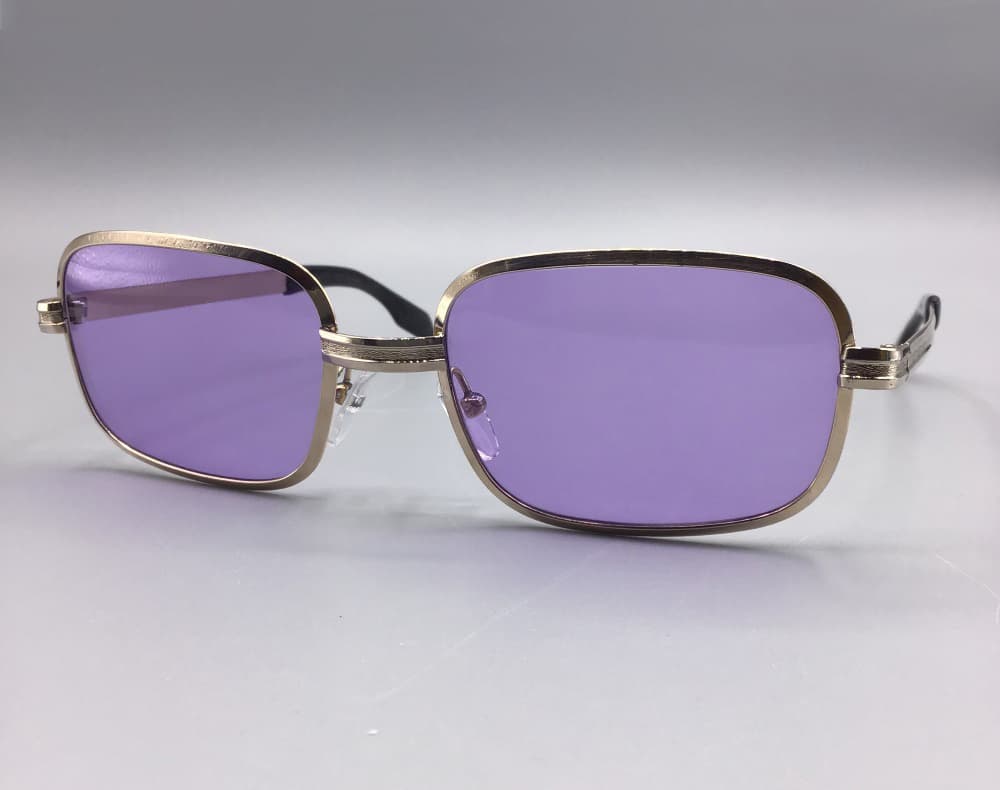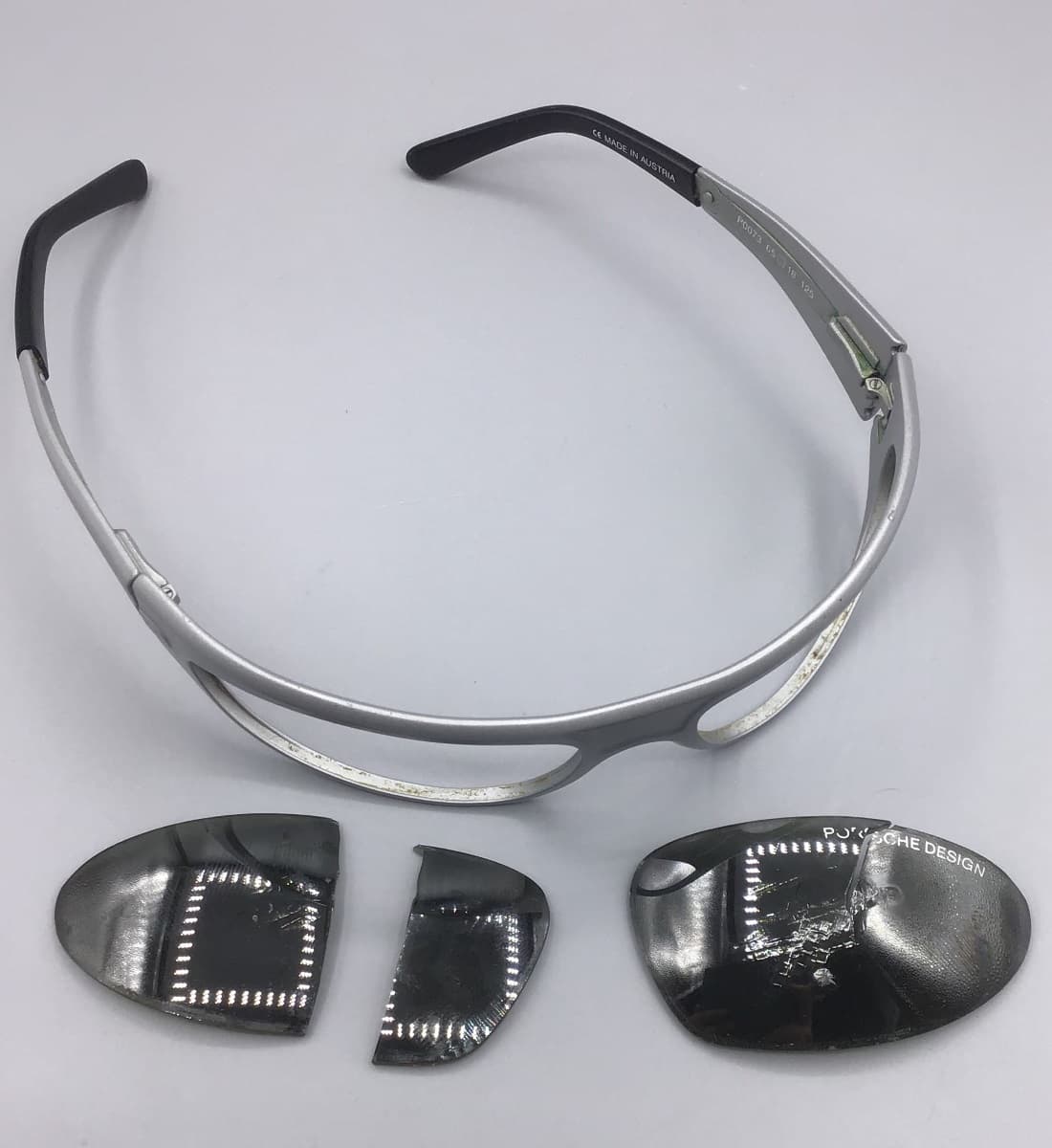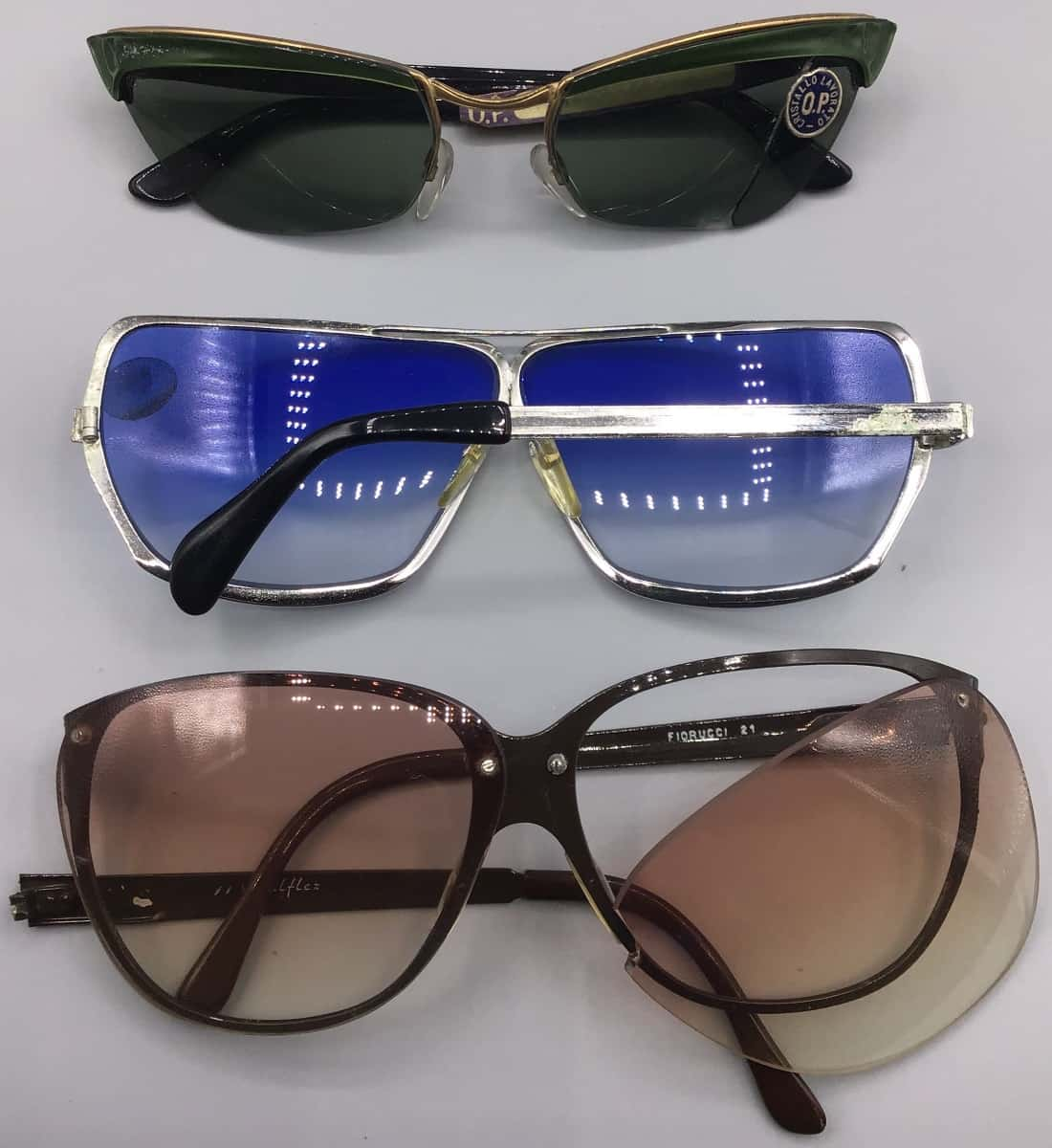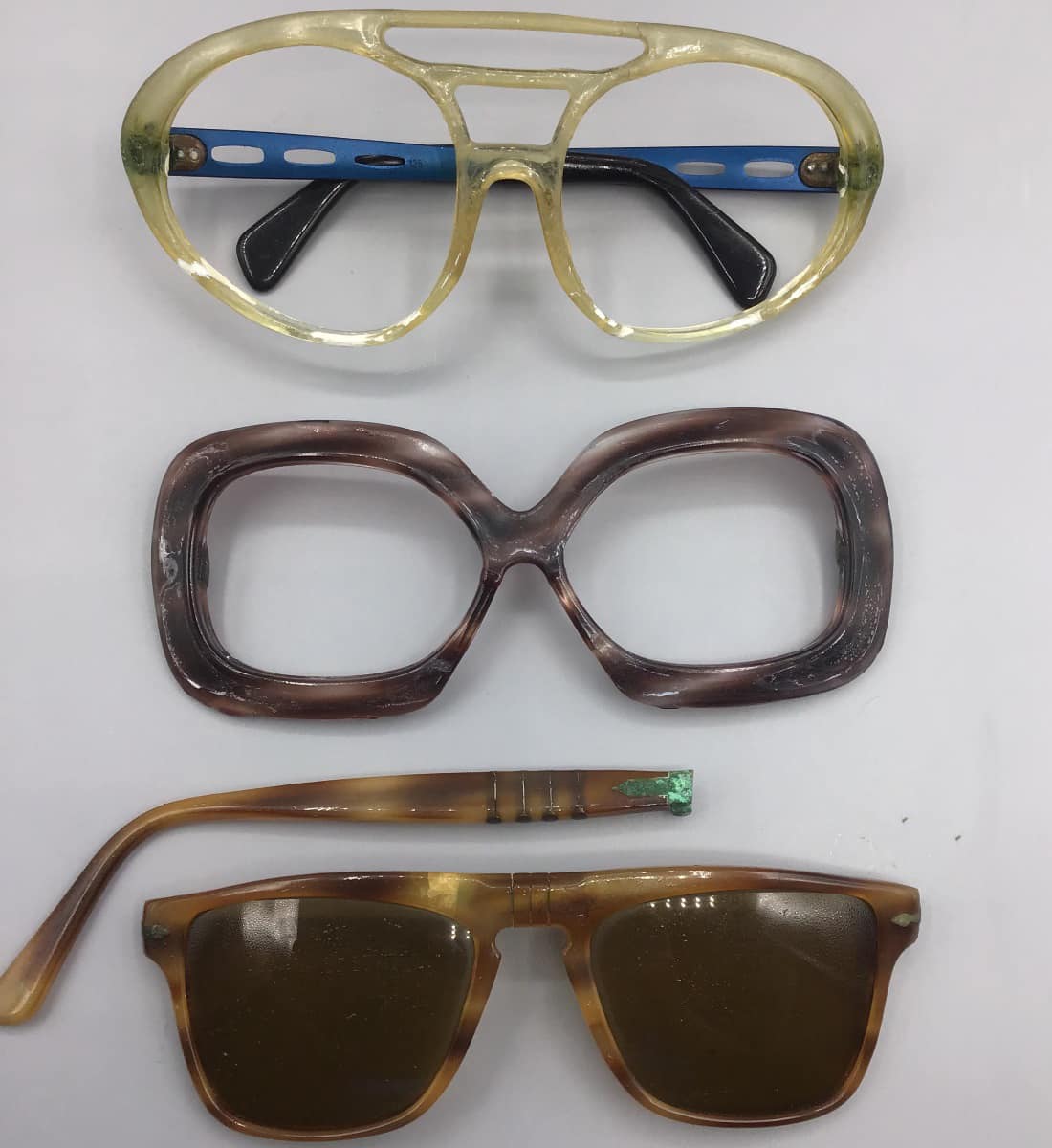Glasses regeneration
for used and vintage modelsWhat is it and how we carry it out
Every pair of vintage eyeglasses we offer are either used eyeglasses or NOS (new from old stock) restored and refurbished in our laboratory-optical workshop. The first step is an initial assessment of whether or not the glasses should be brought back to life, i.e. whether there are acceptable conditions for the object to still be used with satisfaction. So, with care and skill, we use ultrasonic cleaning machines for cleaning, pressing machines of hot hinges or with punching, welding, cutters, mini drills, control desks eye trim, vein and minute for glasses of each Type. The result of so much experience and our professional equipment of the latest generation, is a pair of glasses brought back to the best possible conditions.
Step one: complete disassembly of the glasses; they are disassembled from the screws, the rods from the front are separated, the terminals are removed, i.e. the plastic parts of the metal rods, are unscrewed or unhooked the plates of the nose are removed from the lenses present both from sight and solar and the glasses are also disassembled together with the screws and placed in a single basket ready for the second phase.
Step two: the glasses are washed in an ultrasonic cleaning machine following three steps in succession of which the first is a degreasing bath lasting 8 minutes, the second a cleansing and cleaning bath lasting always 8 minutes and a third sanitizing wash of 16 minutes. At the end of this phase the glasses are restored to the best possible conditions, that is, both the plastic and acetate frames are restored to their former brilliance, thus ensuring the hygiene of the object.
Step three: the processes here differ depending on the material and condition of the frame. Acetate or celluloid frames if they have opaqueness are re-polished with polishing machinery and products as they were at the time when they were created. For the metal frames, the conditions are evaluated and, if necessary, galvanized in gold/rhodium/silver. At this stage it is important to assess the type of intervention to be carried out on the frame as, too invasive interventions could irreversibly compromise the materials that time and use may have made fragile.
It is also important to preserve the integrity of the object while maintaining some defects that do not affect its use but rather enhance its characteristics as an object of the past brought back to new life.
Step four: The eyeglasses at the end of this procedure are reassembled, possibly replacing the screw if the change is required, replacing the support plates and/or the ear support terminals with materials as much as possible similar to the originals of the time. It is eventually straightened and placed on the test bench in order to align and straighten the parts that do not appear to be in the correct trim.
The refurbished glasses are ready to be worn, preserved or collected, thus giving this object of the past a second life. Modernization: modernization is the next step and an integration to regeneration. In fact, eyeglasses that have already been regenerated are modernized. The modernization consists of the application of aesthetic or solar lenses of the latest generation with colors, mirrors and curvatures reminiscent of fashion and current trends.
The following example shows a pair of Christian Dior eyeglasses (model number 2251, in Optyl material, in its initial status and decomposed into the various pieces, before the modernization intervention.
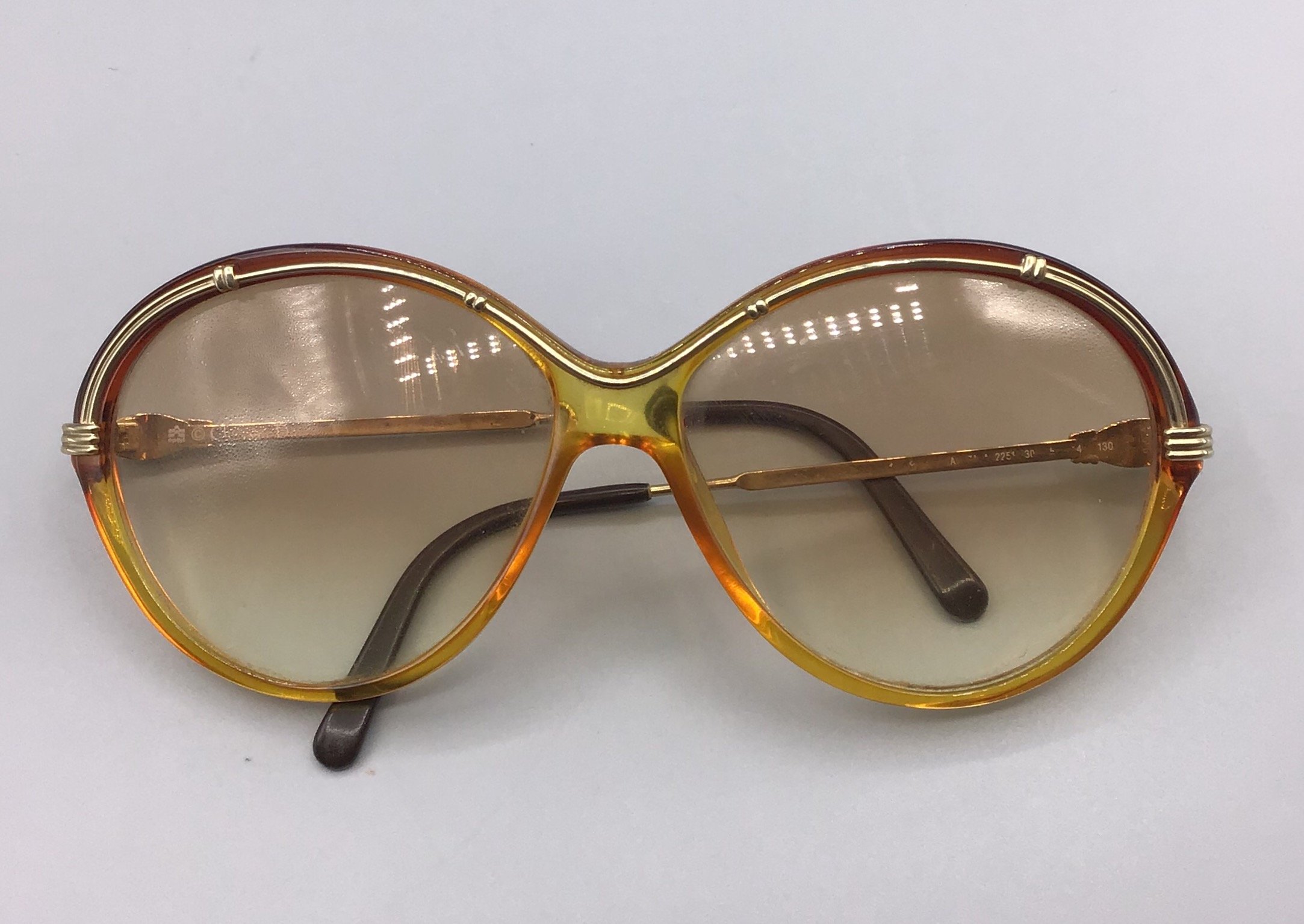
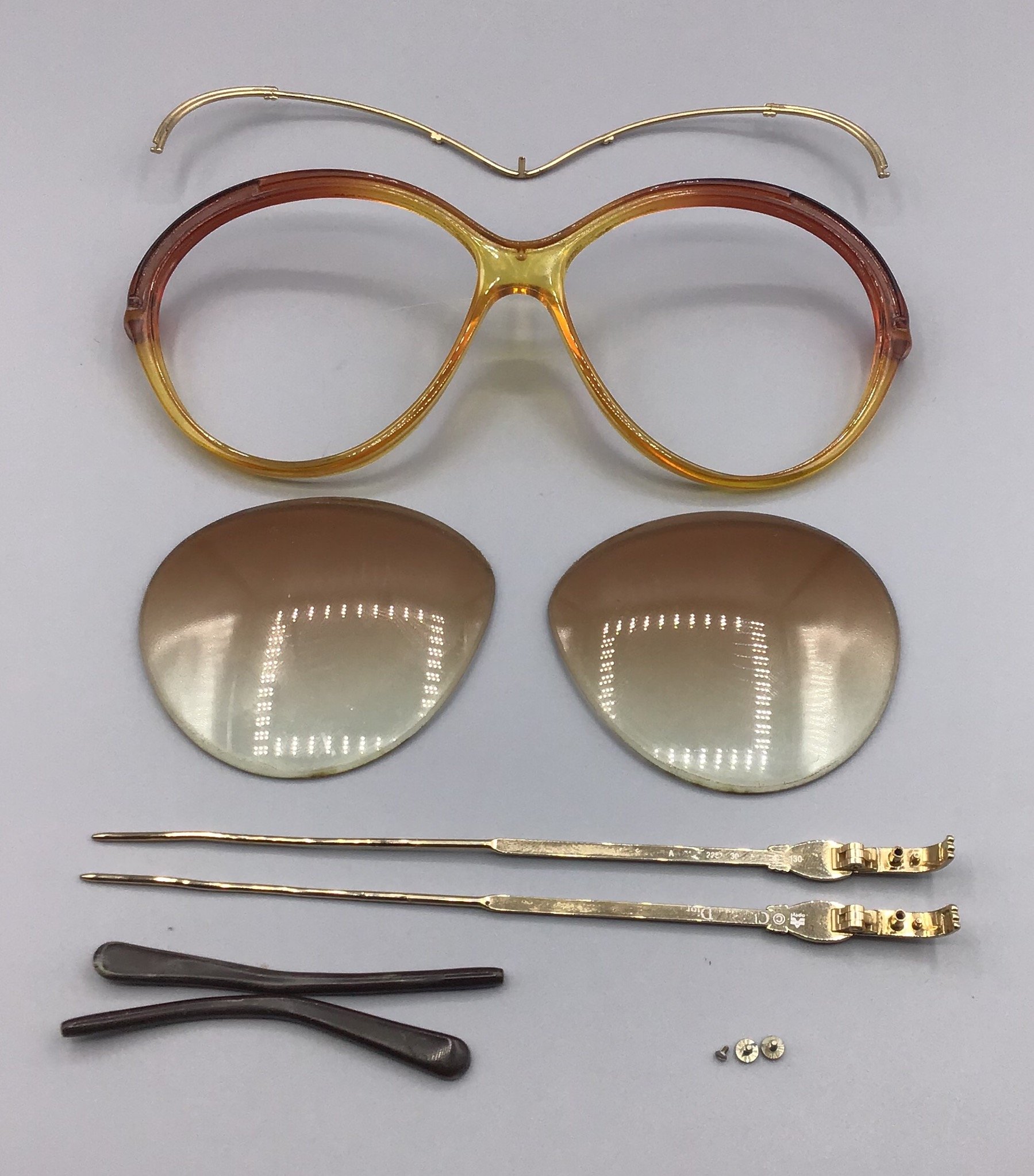
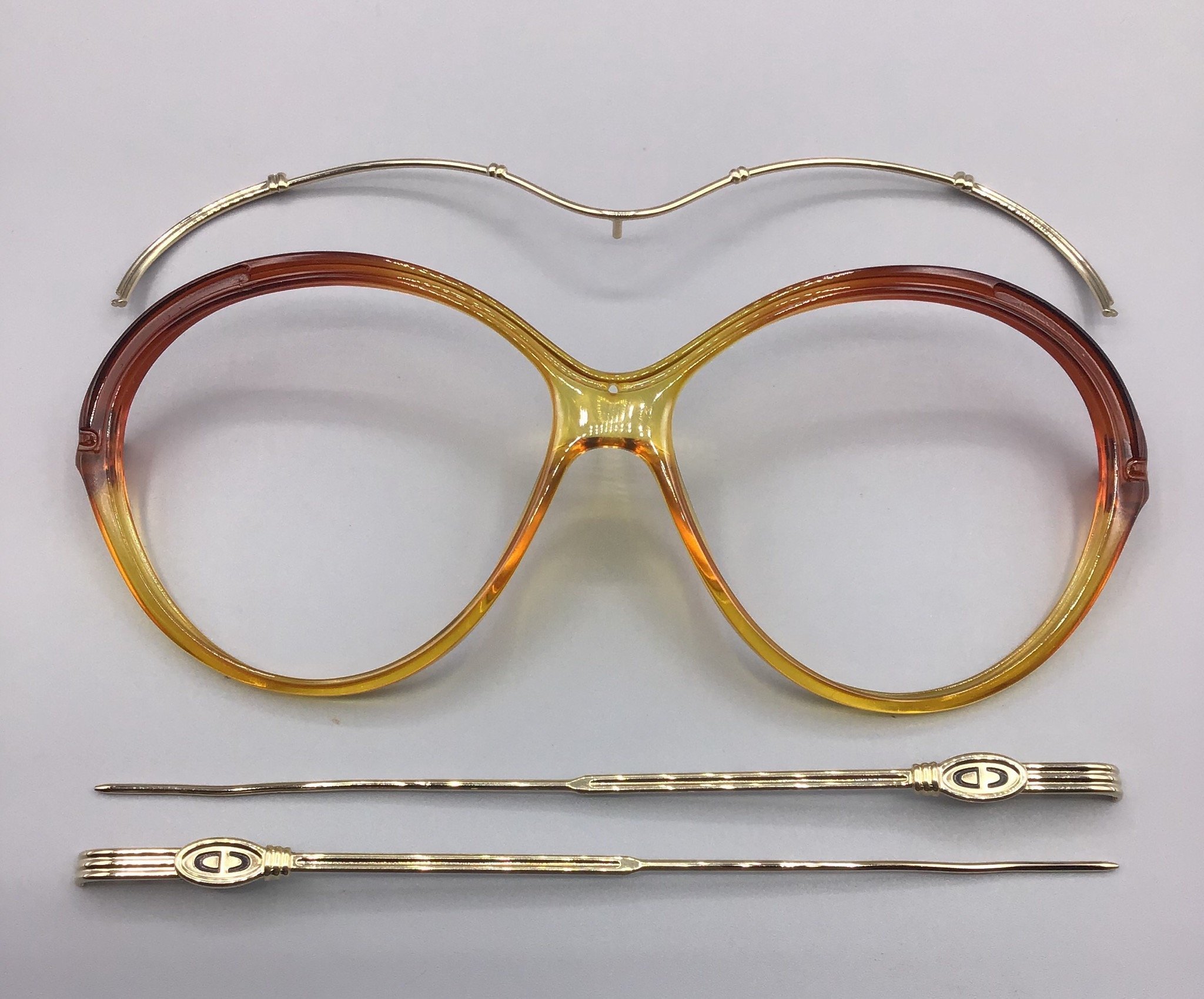
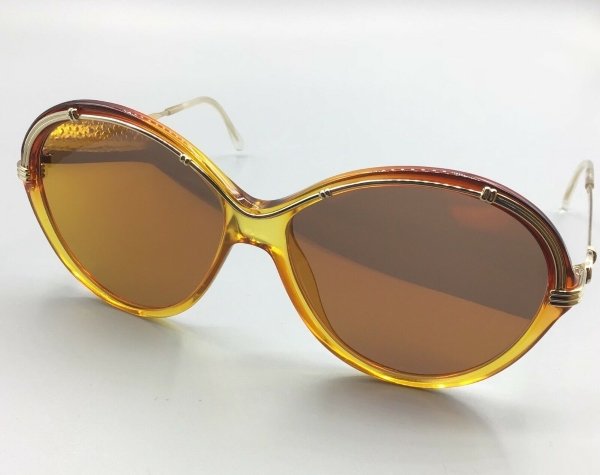
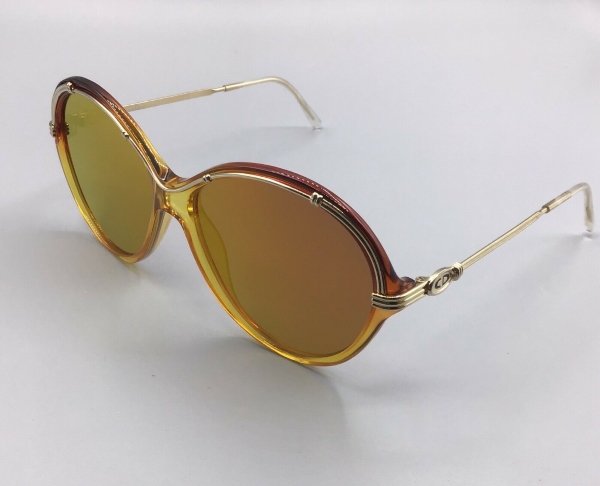
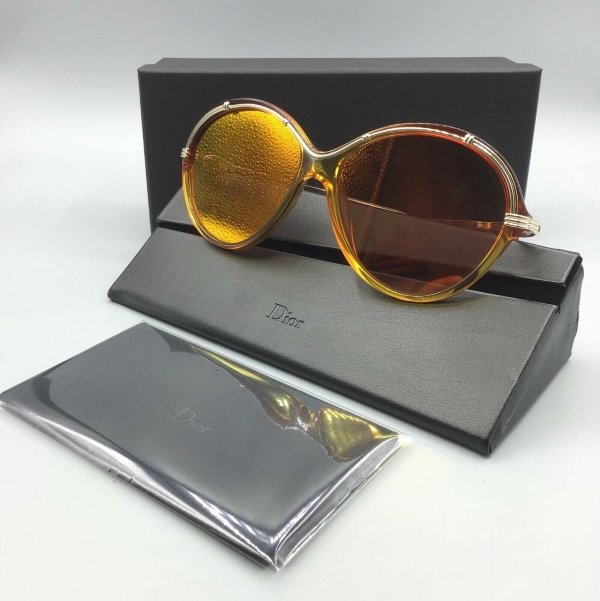
This picture represents a pair of glasses that has suffered an accident that has caused the damage of a rod and the folding of the front aluminum no longer straight, as well as the breakage of the sun filters. They are Porsche Design eyeglasses from the 90s.
This photo shows three new glasses of old stock with different breaks on points no longer repairable. Unfortunately, the weather and poor storage have meant that even through repair operations they cannot be restored for their use.
This photo represents three celluloid glasses and cellulose acetate that, due to incorrect storage temperature and/or humidity, have suffered a deterioration in the chemical composition of the material. Unfortunately this is too severe a condition for a possible restoration. You can see from the photo the change of color and yellowing in several places, as well as a withdrawal of the acetic component that causes a particular effect called crystallization of the material. This result is evident in the last bottom pair of glasses that presents in several places, as if the material were broken glass. In addition to this, there are various serious oxidations of brass parts.

